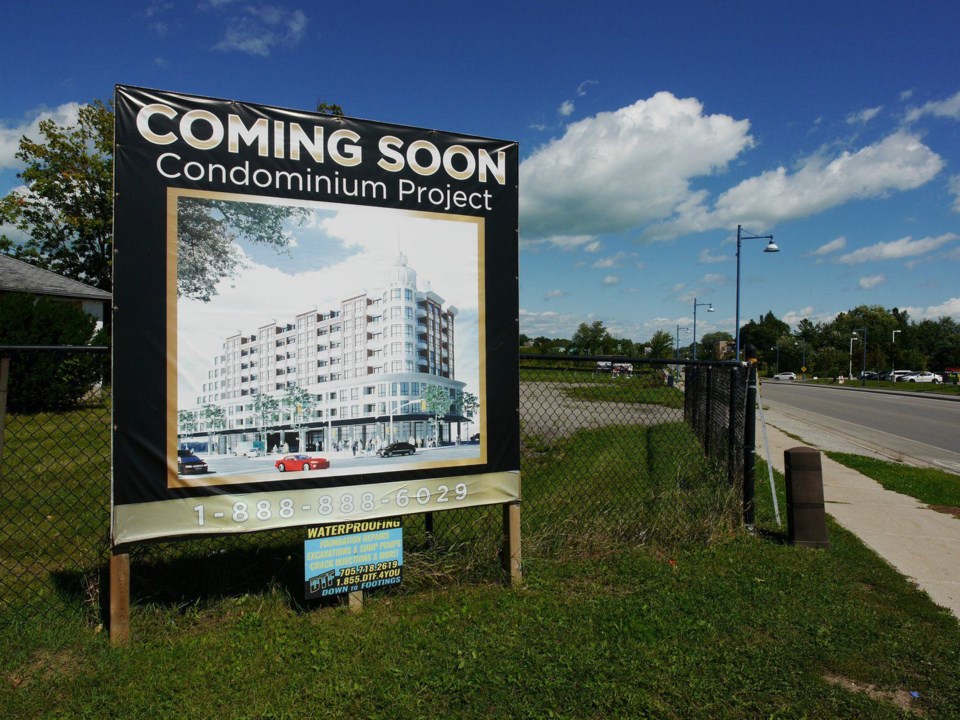Innisfil councillors are still trying to figure out just what the province’s Bill 23 will mean for development in the municipality.
Staff provided council with an overview of the More Homes Built Faster Act, in advance of a review of the town’s planning approvals process and other associated development requirements, to be completed before the summer.
That’s partially in response to what Bill 23 takes away from the town, including what it can and cannot ask for through the site plan application process, which Deputy Mayor Ken Fowler voiced concern over.
“When developers come and say ‘we’re putting in 30, 40, 50 units, here’s our design,’ we can’t say anything about it," Fowler said. “What powers does the town have at that point?”
That’s a common refrain throughout Ontario.
The Ford government introduced Bill 23 on Oct. 25, the day after municipal elections in the province. With a goal to build 1.5 million new homes in Ontario, the provincial Tories introduced sweeping changes with the bill to ensure the development community would be unencumbered in reaching that milestone.
It’s a goal the Town of Innisfil supports, in theory. Staff indicated they are “aligned” with the province’s desire to increase housing, reduce duplication and streamline development approvals, but acknowledged they share the significant concerns about Bill 23 found in many other municipalities.
“The proposed changes to the Development Charges Act result in less development charge revenue collected by municipalities to fund the costs of growth-related infrastructure primarily consisting of water, wastewater, and transportation projects/studies to support new housing, commercial and industrial development,” the staff report stated. “Planning for complete communities requires a fiscally sustainable approach for the funding and constructing of hard and soft infrastructure which is fundamental to achieving well-planned growth.”
Staff didn’t provide an estimate as to how much the changes could cost the municipality in the report, only to say the bill, as proposed, would cause a “significant reduction” in what the town could collect from developers to pay for growth.
“In the absence of alternative funding from the provincial and federal government, the delivery of growth-related infrastructure may be slowed or there will be an impact on property taxes,” the staff report stated.
Fowler required further clarification on just how some of those reductions worked out. Bill 23 introduces reductions or exemptions of development charges beyond what is already included in the Development Charges Act. The way development charges are calculated will also change, with a five-year phase-in being introduced for any development charge bylaw introduced after June 1, 2022.
The new bylaws begin with a 20 per cent reduction in the first year, and subsequent gradual reductions until the rate is reached in year five. Other discounts are then factored in on top of that, such as for rental housing developments and affordable housing.
Bill 23 also adjusts calculation by extending the service level history from 10 to 15 years and extending the maximum bylaw length from five years to 10 years.
“Changing the service level period to 15 years, has the effect of reducing the town’s overall funding envelope, thereby adding pressure on the ability to collect the necessary funds to complete growth-related capital projects,” the staff report stated.
For Mayor Lynn Dollin, there was a sense of déjà vu with some of the new planning directives, being on council long enough to see some of the government’s ideas being repeated.
“Some of this is very much going backwards,” she said.
One of the changes proposed will allow for developers to determine where the parkland they donate to the town will be located, which in the past translated into the undevelopable wetlands on a parcel of property, the mayor recalled.
Dollin also saw another previous planning directive return through Bill 23. The provincial government will now have the final say on planning approval, as opposed to regional governments, such as the County of Simcoe.
“I was here when we used to do that and there was such a backlog” Dollin added. “It took months to get approval for things. I fail to see how that is going to speed things along and build homes faster.”



